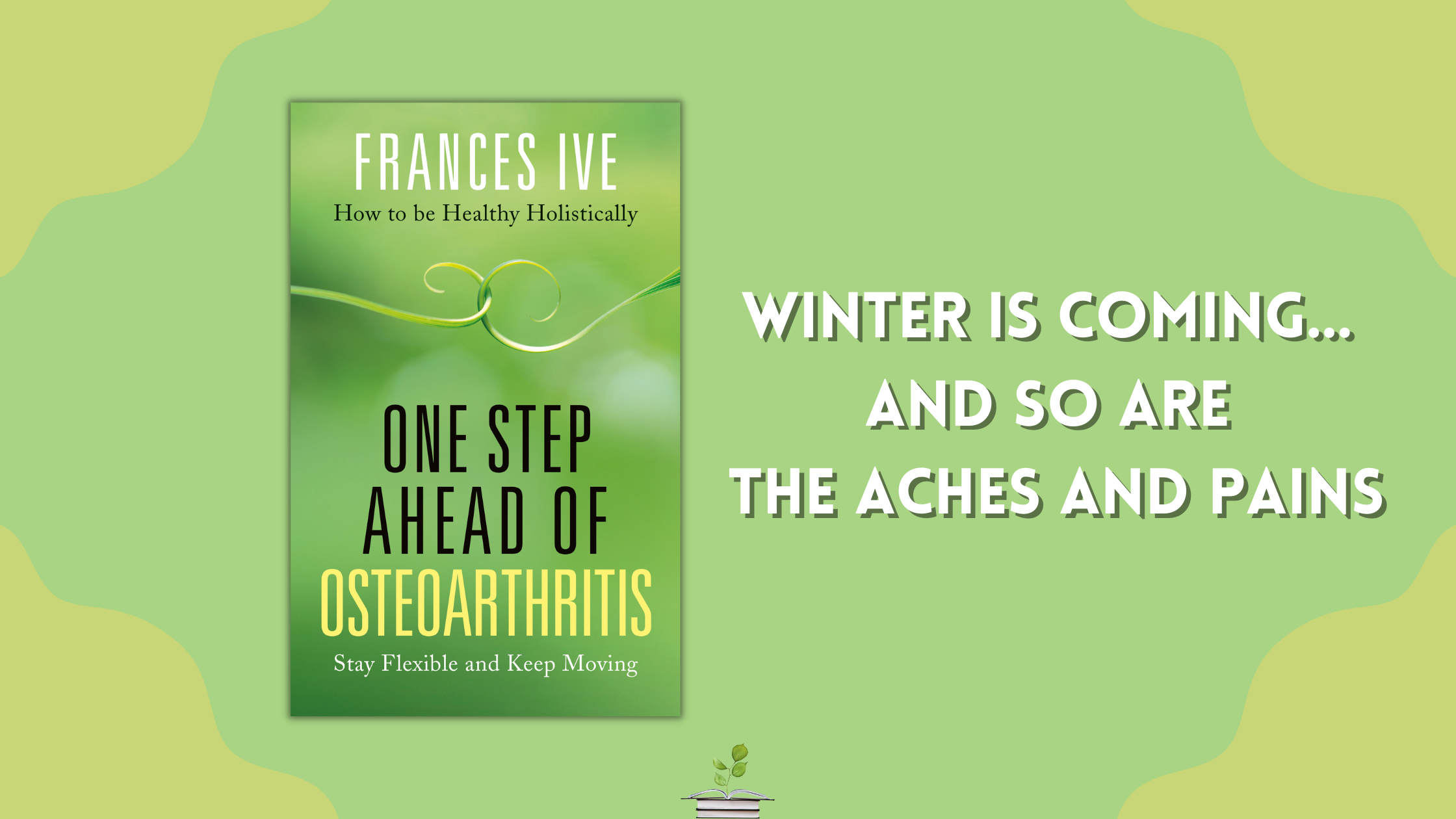
Blog written by Frances Ive, author of ‘One Step Ahead of Osteoarthritis’.
I don’t know about you, but I found that my knees and hands were virtually pain free during the hot summer this year. As soon as the damp started creeping in, so did the swelling and discomfort.
There have been changes going on too in the recommended treatment for osteoarthritis (OA).
After goodness knows how long, a change has also come about. NICE (the National Institute for Health and Care Excellence) has produced draft guidelines advising GPs that the first recommendation they should give for OA is exercise and weight loss, instead of strong painkillers which have been standard treatment for some time.
My book, One Step Ahead of Osteoarthritis, focuses on taking charge and managing OA, principally with exercise and losing weight, but also diet, complementary therapies, supplements and practical tips.
The bottom line is that you need to stay active and mobile. Losing your mobility is the start of a slippery slope downwards so the goal is to keep moving.
Why exercise is good for you
One reason why keeping active is good for your osteoarthritis is that exercise strengthens muscles, which surround and protect the joints. The other major plus of exercise is that it helps us to lose weight. According to Dr Paul Chrisp, director of the Centre for Guidelines at NICE, ‘There is evidence which shows muscle strengthening and aerobic exercise can have an impact on not just managing the condition, but also providing people with an improved quality of life.’
He also stated, ‘Losing weight can have a significant impact on health outcomes for a range of conditions, but it can also help to reduce joint pain for people with osteoarthritis.’
Many UK surgeons now prefer to ask osteoarthritis patients to lose weight before opting for joint surgery and find that in some cases patients no longer need the operation.
Mobility is essential
Retaining mobility is key to having a better quality of life. Conversely, becoming immobile is life changing and can lead to isolation and loneliness. It’s important to be able to stay independent and get out and about at any age.
Different approach to painkillers
NICE also claims that there is new evidence which shows there is little or no benefit to people’s quality of life, pain or psychological distress from taking strong painkillers. Particularly in the case of strong opioids, there is evidence that they can cause harm in the longer term and become addictive.
So what exercise should we do?
You can do specific exercises for the knees, hips and hands – the most common areas for OA – and you can find diagrams showing how to do these in my book, courtesy of Versus Arthritis, the UK charity. Not only are these helpful but they can be done at home for free, without needing to go to a gym or classes.
It might be that you already have a favourite activity, exercise or sport that you want to continue with. Some people find gardening is enough activity for them and it keeps them mobile. But most important of all is that you find the type of exercise that most suits you.
Health experts suggest that we should exercise for at least five days a week for around 30 minutes each time. If you are incapacitated it’s important to build this up at your own pace.
Formal exercise that is helpful
Cycling – great for strengthening muscles around the knees.
Yoga – stretches and flexes muscles and makes the body stronger.
Pilates – improves core muscles, helping to take the strain off your back.
Walking – good for joints as well as heart and lungs.
Swimming – gentle and muscle strengthening.
Tennis – using supports for problem knees and joints, it is brilliant exercise for people of all ages.
Golf – involves plenty of walking so has all round benefits.
Read more about how to manage osteoarthritis and ensure your quality of life in ‘One Step Ahead of Osteoarthritis’, Frances Ive, published by Hammersmith Health Books, and discover how you can help yourself to feel better and maintain a good quality of life.
